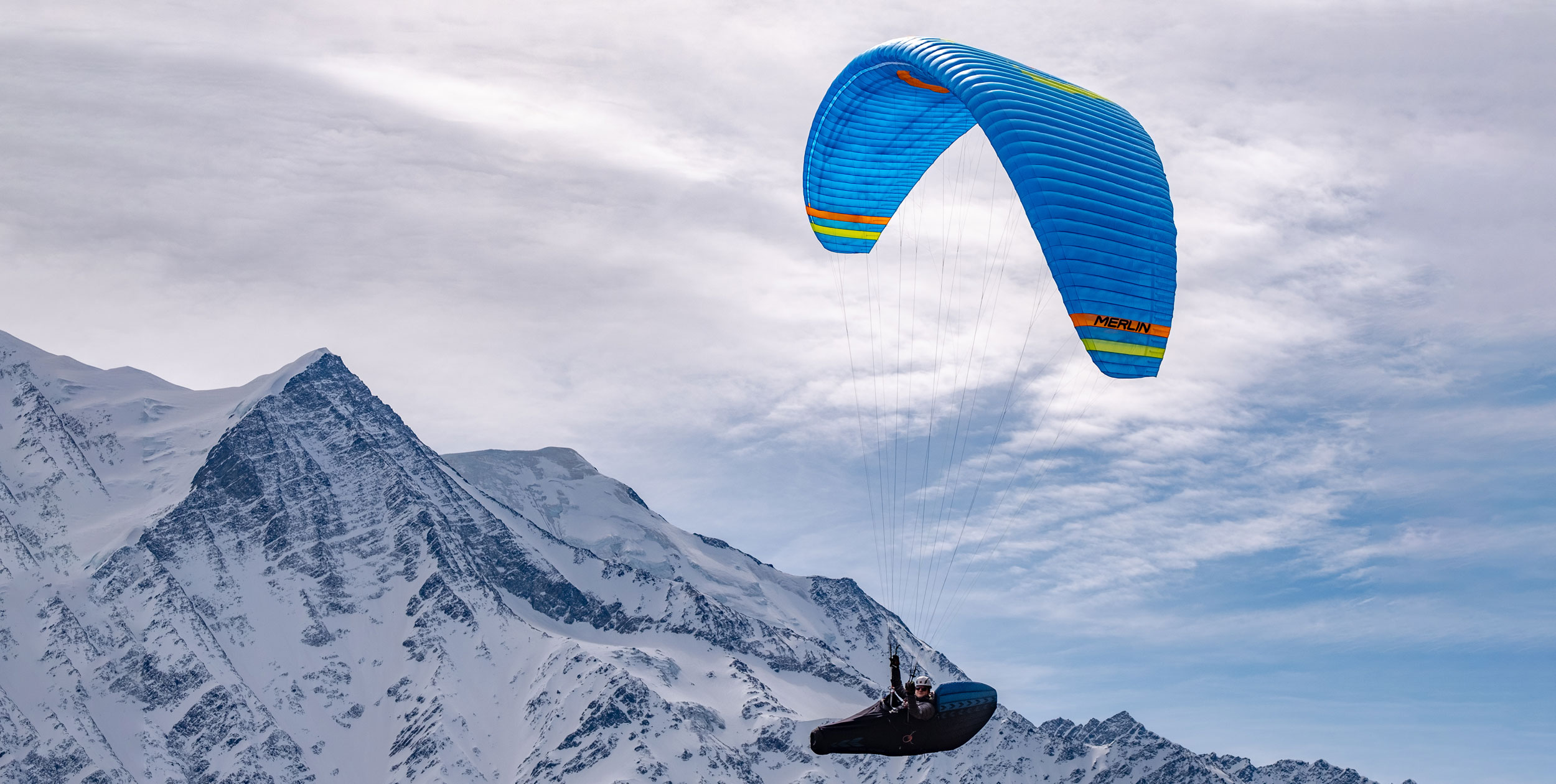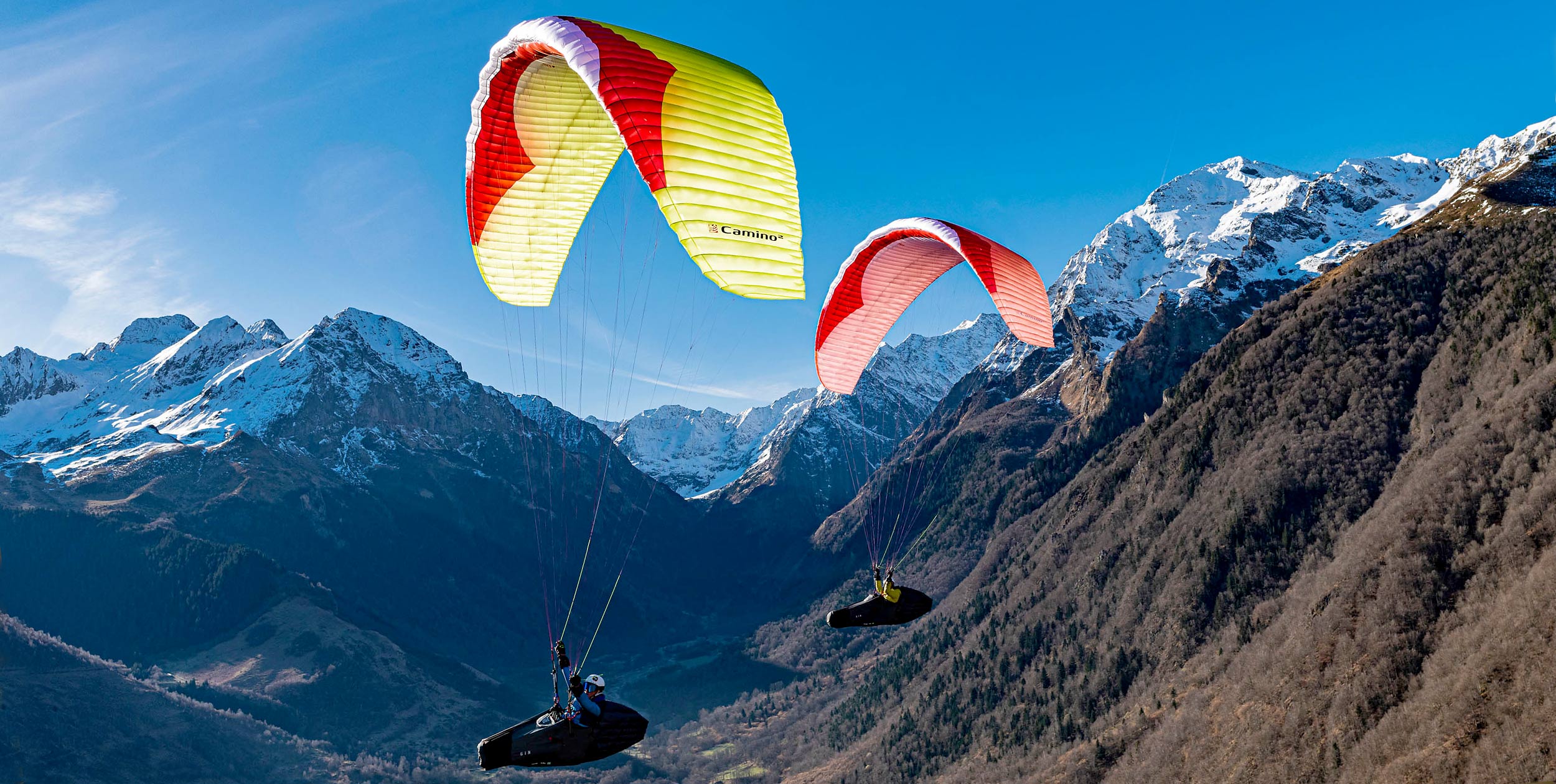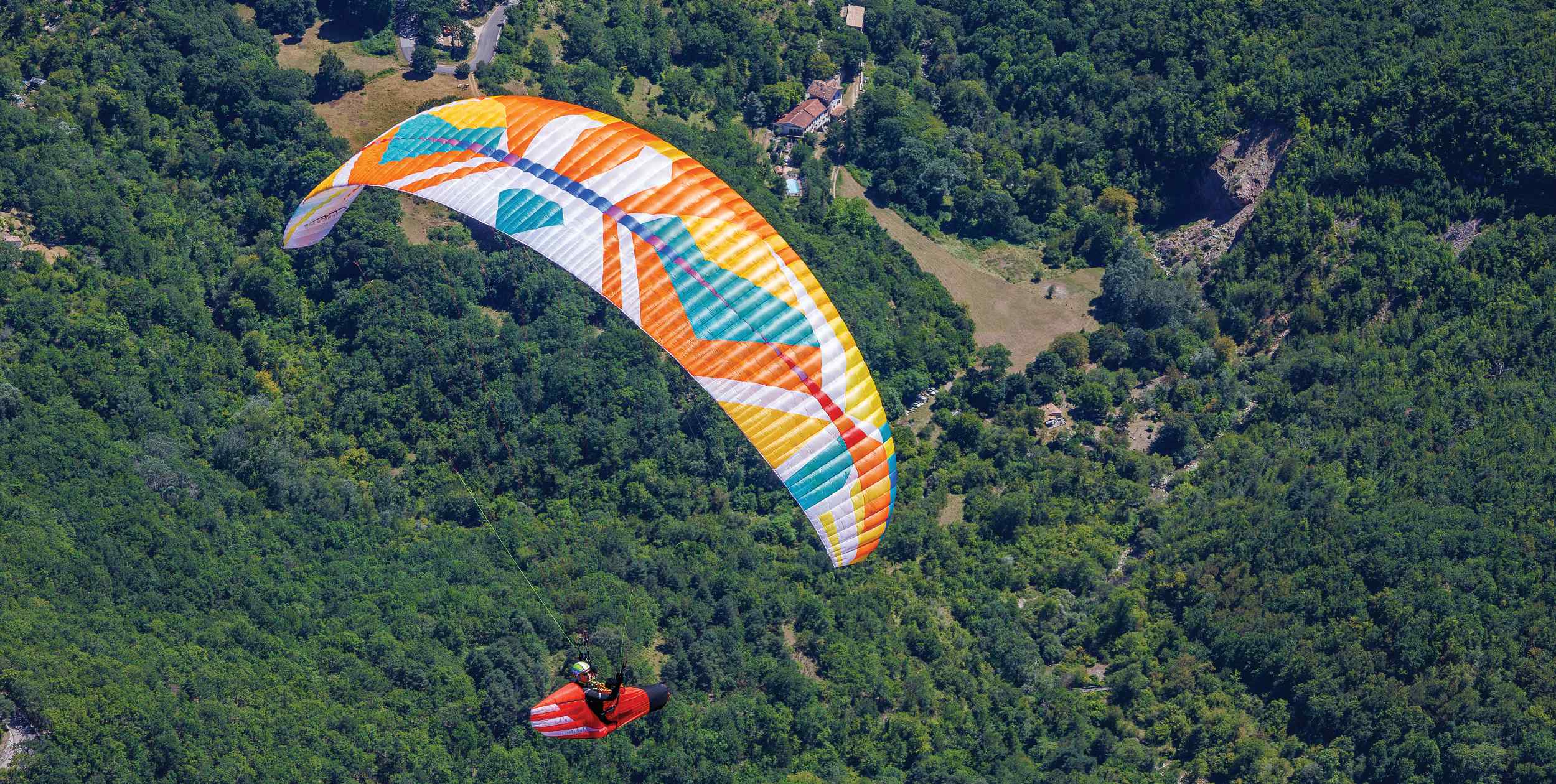Sky’s three-line EN-C has been updated and given a lightweight makeover. Marcus King tested the Exos 2 in the south of France
The original Exos was released in 2017, and now six years later Sky have released the second iteration of their EN-C sports-class wing.
I did not know the glider was lightweight, so the first shock came when I picked it up. At just 3.6kg for the large – which goes up to 105kg all-up – it is a proper lightweight wing suitable for hike-and-fly adventures as well as XC. There is also a lack of long plastic rods, which means it can be packed nice and small.
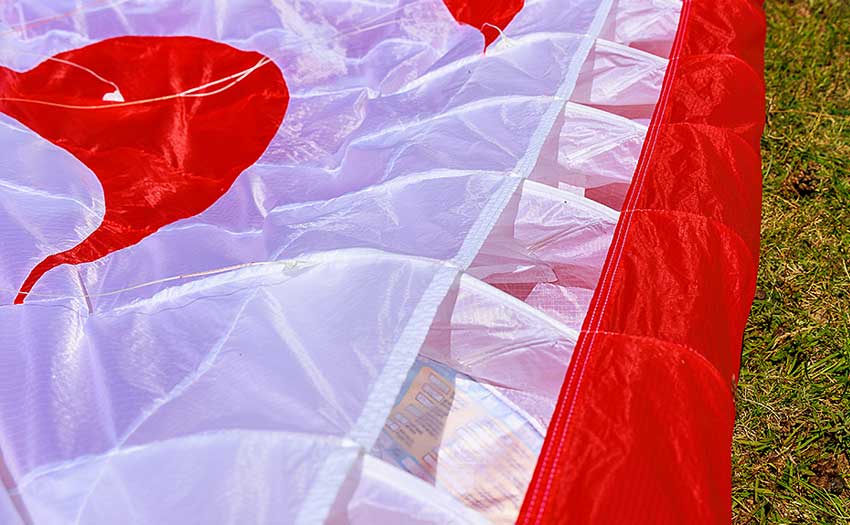
The leading edge has crossed nylon wires and features 3D shaping on the top and bottom surfaces, hence the extra seam just below the cell openings
Design and build
Unrolling the wing its relatively high aspect ratio of 6.4 is obvious. The leading edge features 3D shaping both on the top and bottom surfaces to smooth out this vital part of the profile, with two seams on the top and a single extra seam running across the span on the bottom. Likewise, mini-ribs on the trailing edge smooth out this part of the profile.
There is a sharknose style shape on the inlets and this is supported by two crossed short plastic wires with some extra bits of Mylar to help the shaping. The wing has 65 cells which makes for a sporty smooth-looking sail.
Designer Alexandre Paux said, “Even though the planform, arc and basic structure have stayed the same, small changes on the skin tensions and V-structure tension as well as small modifications on the top of the aerofoil allowed us to bring a totally different glider that is at the same time more comfortable and performing better.”
Looking at the tech specs the wing has a low-arc design, ie it is quite flat. Dividing the projected area by the flat area gives an arc of 0.88, which is flatter than any of the EN-C wings we compared with each other in the aerodynamics article last issue. With a flat wing you can expect better glide performance but with less cohesion of the wing and less agility in turns. Designers though can compensate for the latter with how they distribute the lift creation across the span.
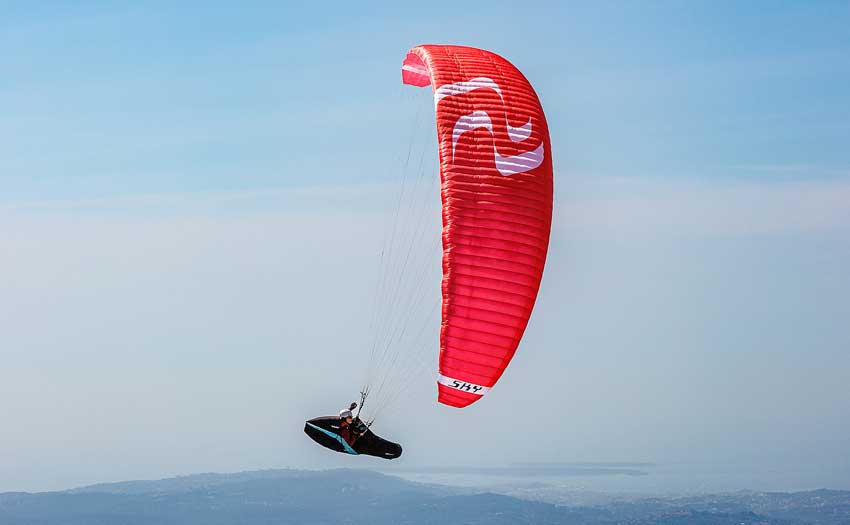
The wing has a low-arc design – it’s quite flat. With a flat wing you can expect better glide performance but less cohesion of the wing and less agility in turns
Materials
The new version of the wing makes use of light materials with Porcher 27 for most of the panels. The leading edge however is made from more robust Porcher 32. Internally 32g Porcher is used. All this has shaved a little more than half a kilo off the weight of the wing.
The wing uses a classic three-line design with four attachment points across the chord in the centre of the wing with a bifurcation in the Cs near the wing. All the lines, a mix of Liros and Cousin, are unsheathed but are bright orange, making them relatively easy to see on the ground. There is, however, no colour-coding to differentiate the different sets, although it was easy to sort before launch.
When I asked designer Alexandre why he had stuck with a classic three-line layout, rather than go for 2.5, he said, “At Sky we seldom just follow fashion or play with the limits. We don’t use the thinnest lines or try to save the very last 10m of line length. I try to find the optimum length of line for safety and performance.”
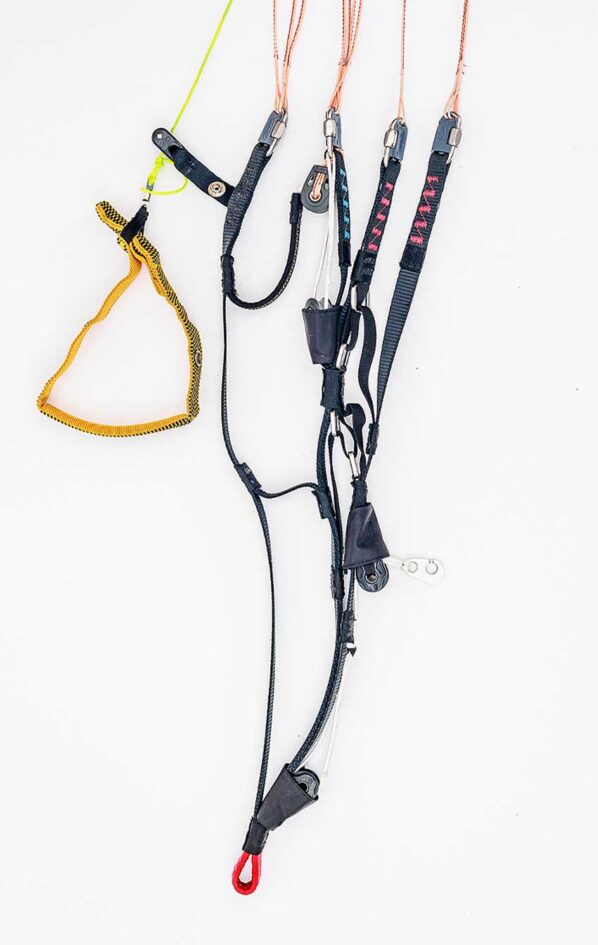
Riser set uses black webbing with coloured highlights
The risers use thin webbing and have a rear-riser control system. Dyneema cord running through pulleys connects a padded area on the rears with the Bs, to keep the profile shape as they are used. The pilot’s weight is taken on the webbing of the Bs at trim. There are split-As to help with big-ears. The brake handles are attached with poppers and have stiffening at the top so you can use them like XC handles. All the pulleys are from Ronstan.
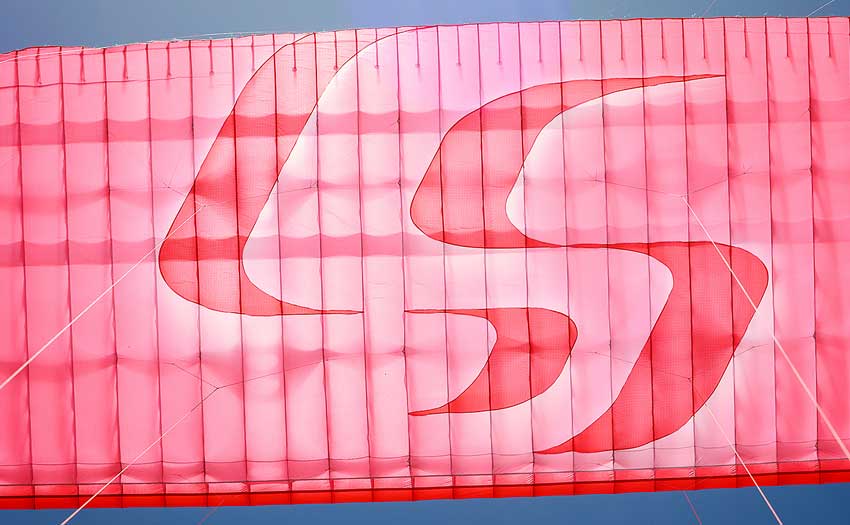
The wing is available in four standard colour schemes, featuring the large Sky S in the centre
The Exos 2 is available in four sizes covering weight ranges from 65kg to 120kg all-up and in four standard colour schemes, featuring the large Sky S in the centre.
On launch
The glider’s lightweight construction makes inflating the wing in even the lightest breeze easy. In stronger winds it can snake around a bit but any pilot of this level should be able to control it. Putting pressure on the As it comes overhead smoothly without any last-minute acceleration as it. A dab of brake will stop it overhead and it seems quite tolerant of pulling hard without it falling back too easily.
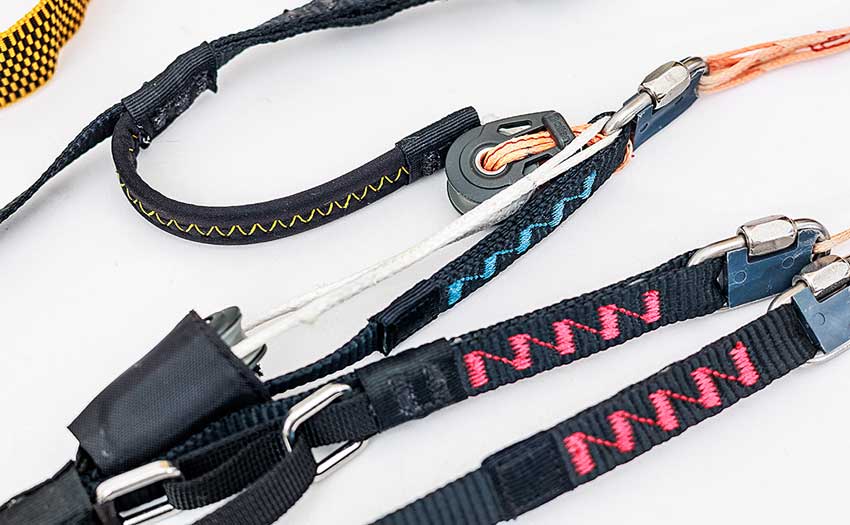
C-riser controls use Dyneema cord running through pulleys to pull down the Bs. Instead of a handle there is a padded section of webbing
In the air
Once airborne you notice there is quite a lot of feel in the brakes. The flat arc seems quite noticeable to me, giving the impression that there is quite a bit of lift generation out near the tips. It means the wing maybe doesn’t feel quite as cohesive as some high-arc designs but it gives you a good feel for what the air is doing.
I found I could map the thermals very easily with this wing. That’s very useful when conditions are lighter or if you are working broken lift low down. It meant I could quickly find and make use of the cores, and that can make the difference between getting up or not when you are looking for a low save. Some pilots coming from more solid wings may find it quite talkative but others will love the information it gives.
A low-arc design can have less agility but I found the Exos 2 very easy to get turning into thermals, and once in it had no tendency to be pushed out or pushed around. I could place it where I wanted.
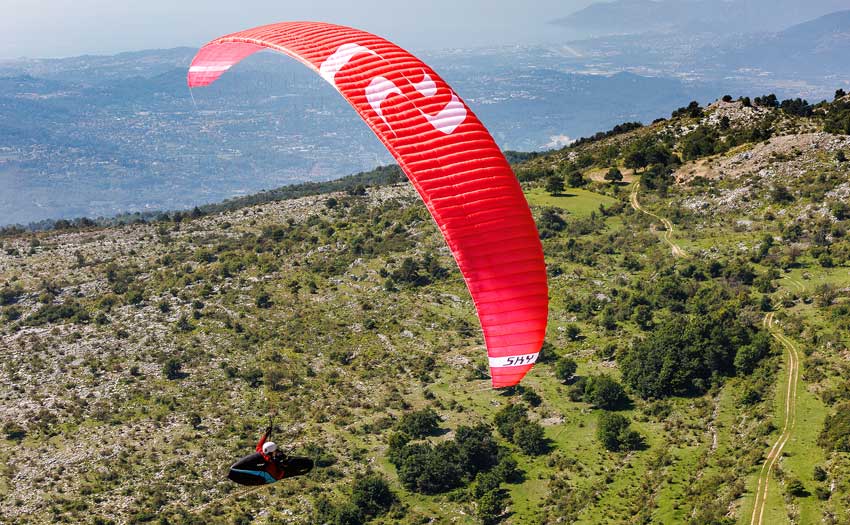
I found I could map the thermals very easily. That’s very useful when conditions are lighter or if you are working broken lift low down. It meant I could quickly find and make use of the cores
On entry to thermals it doesn’t have the driven feel of some wings but pitch is well controlled so you will feel comfortable. The XC handles built into the brake handles and the short initial travel help give a nice direct feel to the wing. There is plenty of travel before you get near the stall point.
I took the wing on a couple of cross-country flights here in the south of France and it felt comfortable throughout. It’s not an exhausting wing to fly, there are no hidden surprises and you feel you know what the wing is doing, making it comfortable to work the terrain when needed.
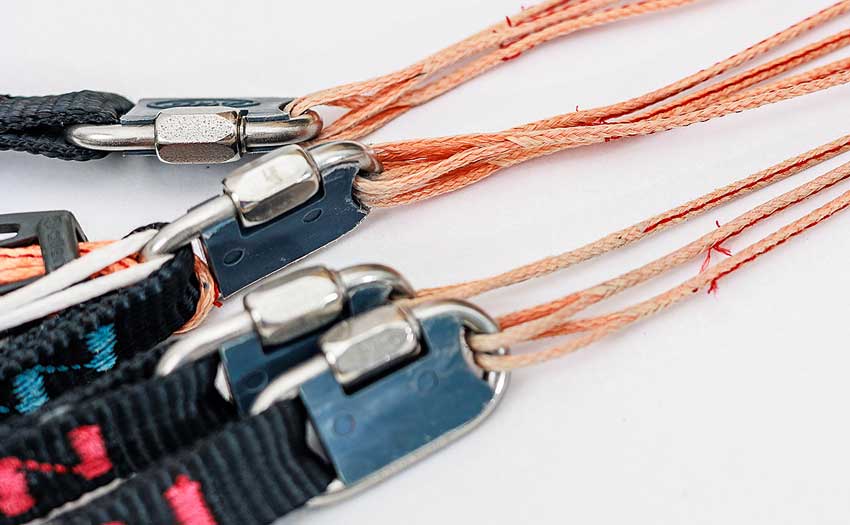
Lines are unsheathed and the same colour
Performance
The Exos 2 stays solid even on full bar as well as remaining well pitch-controlled. It can be easily controlled using your hands in the padded areas on the rear risers and there is a reasonable feel through them. I didn’t realise quite how much I had got used to the direct feel of the controls of a two-liner but these are still effective, it’s just feedback is a bit more subtle.
In reality I didn’t actually need to control the wing that much. Alexandre told me the original Exos “was quite nervous during the glide, with wing tips pulling forward when crossing thermals or turbulences.” It seems this behaviour has been completely fixed and the wing doesn’t move around much on glide.
Using the GPS I found I could get between 13 and 14km/h extra speed on full bar. On glides I made with other similar three-line wings I felt it had similar performance, but unless you are flying wing-tip to wing-tip with the same wing loading and harness any definitive comparisons should be avoided.
Big ears are easy to pull using the split As and once pulled in sit nicely without much pressure needed. I had to make use of them combined with full bar to transit under an area of sucking cloud. I was able to pull big ears without them flapping aggressively. The combination of bar and big ears gave a good sink rate with forward speed. Once released the big ears generally roll out on their own; of course a pump of the brake pushes them out quickly. If you prefer spirals it is easy to control the wing, and exiting is fuss-free if you bleed off the energy.
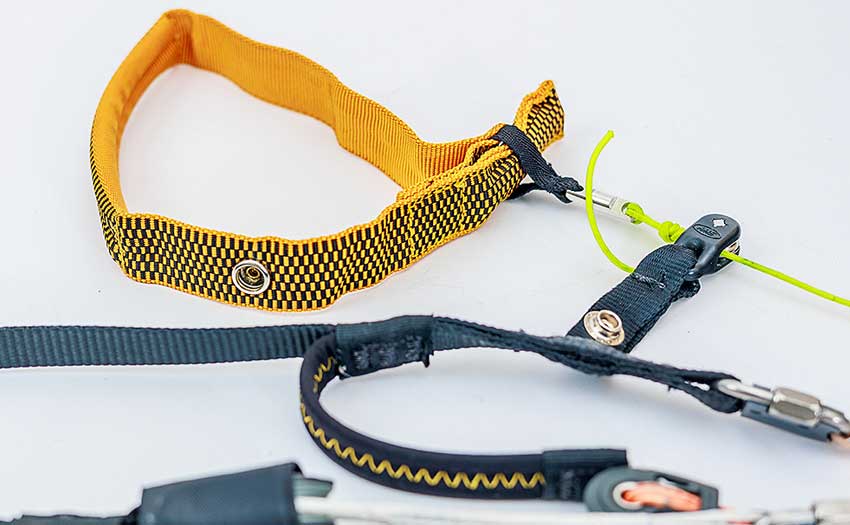
Brake handles have a stiffened bar at the top that can be used like an XC handle
The verdict
The Exos 2 is a classic three-line EN-C, great as an entry into sports-class wings. It will particularly appeal to those looking to have a light wing for adventures in the mountains without compromising much on performance. It will also appeal to pilots who like a wing that talks to them: I found the feel you get great for mapping the lift without it being overwhelming.
When I asked designer Alexandre Paux what he was most happy about with the new wing he said, “that we managed to improve both the behaviour and the performance without resorting to easy gimmicks like super thin lines.” It’s an honest performing cross-country wing that has its own unique character, try it and you may find you like the style.
Manufacturer’s SPECIFICATIONS
Sky say: “A performance XC glider that perfectly blends performance, precision fun-handling and high safety with a reassuring feeling on those long and demanding flights”
Use: Cross country and vol-biv
Pilot level: Sports class
Sizes: S, M, L, XL
Certified take-off weight (kg): 65-85, 75-95, 85-105, 95-120
Flat area (m2): 20.78, 22.12, 23.38, 24.88
Glider weight (kg): 3.3, 3.45, 3.6, 3.8
Cells: 65
Flat aspect ratio: 6.4
Certification: EN / LTF C
Marcus flew the Exos 2 L (85-105kg) in the southern French Alps at around 101-102kg, paired with a Woody Valley GTO Light 2 with foam protection.
Published in issue 242 (August 2023)


